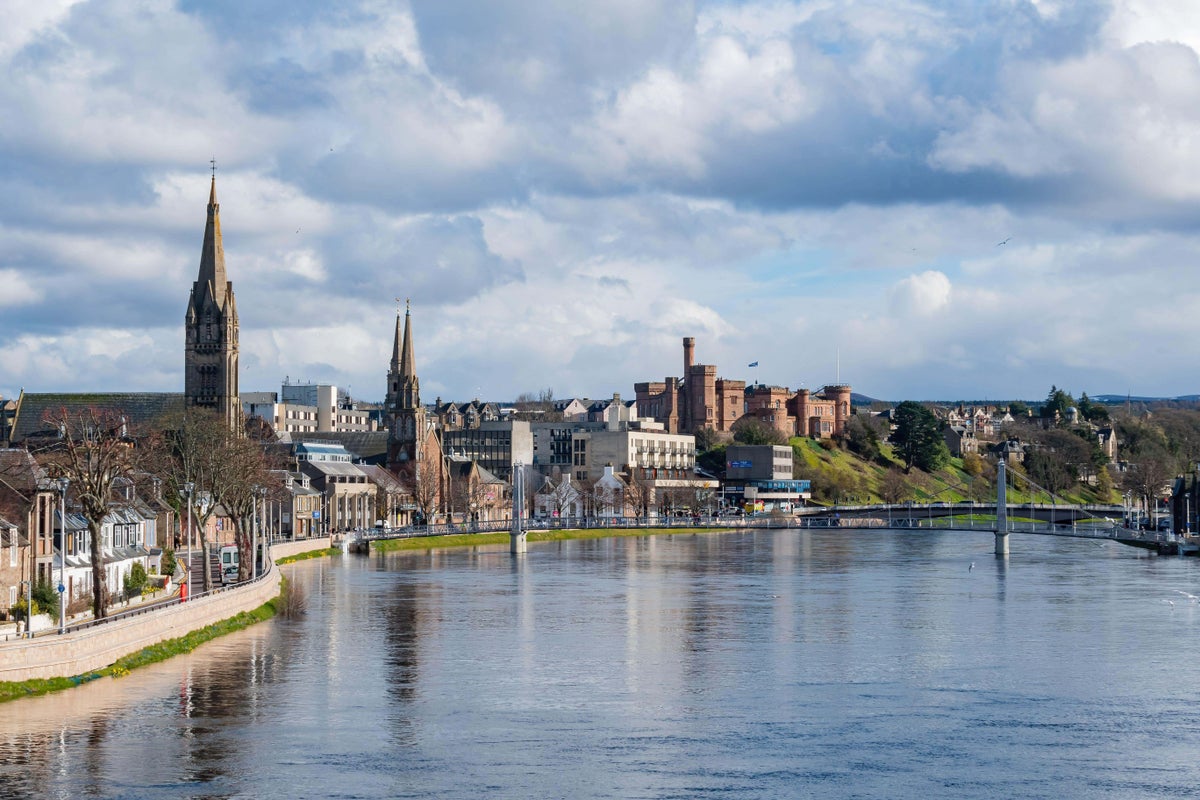
As we crossed the Keswick Bridge into the rolling hills outside Inverness, green fields of early-spring barley still had months to grow until harvest. The grain will be sent to a nearby malting factory and eventually made into whisky at some of Scotland’s 150-plus distilleries.
Interspersed among the barley fields were yellow rows of flowering rapeseed, used to make cooking oil, and herds of grazing sheep that seemed to outnumber people.
It was a tableau I thought would have been the same for a thousand years. But rapeseed only started to be planted in the 1970s, and at one point there were a lot more people than sheep, said my guide, Cath Findlay.
During the tumultuous hundred years of the Highland Clearance, landowners kicked out most of the tenants and replaced them with sheep, which were more valuable to them than people, Findlay said.
“At the time, the British government were fighting all over the world, and they needed wool for uniforms and meat for their soldiers,” she said. “So in much of the Highlands, we see that it’s hilly, and there are lots of sheep.”
The history lesson resonated because it was obvious throughout my week in Scotland that the past is very much present. But Inverness and its environs are hardly stuck in the past.
Small, but thriving
Inverness is the gateway to the Highlands, a rugged, windswept region of northwest Scotland. The small but thriving city, one of the fastest-growing in the United Kingdom, is best known as the jumping-off point for mystical monster hunters attracted by the legend of Loch Ness.
In recent years, however, it’s carving out an international identity beyond whisky, Nessie and tartan plaid, though there still is plenty of that too.
The centre of town can be crossed on foot in a leisurely 15 minutes. Overlooking a cliff at one end, the red sandstone Inverness Castle was covered in scaffolding when I visited this spring. A renovation to turn it into an interactive attraction focused on stories of the Highlands is expected to finish this year.
Right in the centre is the recently refurbished Victorian Market, a once bustling hall that was on the verge of closing anyway when the COVID lockdown arrived.
Town leaders took advantage of the moment to breathe new life into it. The market now includes a mix of craft stores, cafes, jewellery shops, barbers and one remaining butcher (try their meat pies, which Findlay said are better than homemade).
The seafood market was replaced with a lively food hall, with the acclaimed Bad Girls Bakery as its first tenant. Following soon were innovative but affordable seafood at The Redshank, pulled meat at Ollie’s Pops, vegan at Salt N Fire, and more.
Now, there is live music every day and 75,000 people pass through the market during busier weeks, nearly the size of the population of the entire city.
“It was dead as a doornail, and now it’s the beating heart of the town,” Findlay said.
Just up Church Street, the main drag, The Walrus and Corkscrew opened soon after as the town’s only wine bar. And nearby at Black Isle Bar, wood-fired pizzas come paired with one of 24 organic beers that the owners brew on their own farm just outside town.
A story with your meal
In the nearby village of Beauly, the Downright Gabbler guesthouse has four suites and a full-time storyteller.
Garry Coutts and his wife, Jane Cumming, opened with a small dining room and their daughter Kristy as chef. It’s not a restaurant, exactly, but they hold several themed events each week that combine Coutts’ encyclopedic knowledge of Scottish history and legend with their daughter’s modern take on traditional dishes.
Among the events is the regularly held Highland Banquet, six courses that trace the region’s people from prehistory to modern times. Venison carpaccio with pickled blackberries, for instance, was inspired by hunter-gatherers, although Coutts noted they ate much more seafood and foraged vegetables than deer.
“They’re very difficult to catch,” Coutts quipped. “They run away!”
The courses unfolded with stories peppered throughout, ranging from some illegal origins of Johnnie Walker’s whisky blends to the couple’s distaste for Las Vegas. Also on the table was a deck of cards, each printed with the name of a prominent Scot to be drawn at random for a story told on the fly.
I pulled Alexander Graham Bell, who likely holds the record for having the most challenges from competitors for patent infringement, Coutts said.
“It’s amazing the number of Americans that come in here and tell me he’s not Scottish,” he said.
If you go
Where to stay: Lodgings include the Ness Walk Hotel, a modern, five-star property a 20-minute walk from the centre, and the Heathmount Hotel, a cosy, independent, three-star option within a 10-minute walk of Church Street.
Travelers tip: For such a small town, there is a shocking amount of live music. Performers attract crowds at Hootananny and The Highlander every night, and most nights at MacGregor’s, among other spots.
Find more information on visitscotland.com.
Albert Stumm writes about travel, food and wellness. Find his work at www.albertstumm.com



